General description
Smart outdoor lights are intelligent, connected LED luminaires that can be remotely operated from a smartphone and allow lighting to be automated and individualized. The use of outdoor lighting fixtures to provide functionality and aesthetic accentuation for building exteriors is an essential strategy to unify the relationship between the indoor space and the surrounding property. Outdoor lighting enhances safety by marking driveways, illuminating walkways and entranceways, and removing darkness from a sidewalk to help prevent slips and falls. Outdoor lighting adds a layer of security by denying dark hiding places and unobserved entry points for intruders, allowing for facial recognition with video surveillance cameras, and acting as a psychological deterrent to intruder ingress. Visually appealing illumination of building facades, hardscape and softscape elements transforms an outdoor space into an inspired nightscape. Wherever people live, work, and congregate, there is a need for outdoor lighting to create visual expansion and continuity between the indoors and outdoors.
Types of smart outdoor lights
A selection of smart outdoor lights exists to allow people to use and enjoy a property in its entirety. The various types of outdoor lights are often used in combinations to give the building exterior a layered look and create the desired mood and atmosphere.
- Wall lights or lanterns are often seen as fixtures flanking a front or back door to illuminate an entrance porch or a backyard patio.
- Wall or eave mounted flood lights throw a wide spread of light toward a building entrance, front yard, poolside deck or garage area to provide ambient lighting for outdoor entertaining and also to improve safety and security.
- Outdoor ceiling lights are typically installed in enclosed or covered areas such as porches, entryways and gazebos to fill in the space with a comfortable layer of light.
- A post or bollard light is designed to provide widely spread ground illumination on driveways, pathways and lawns. Path lights reflect light from under their tops to frame out a space or feature in a yard or to line a pathway and illuminate a safe passage to a building’s entrance.
- Step lights are installed in stair risers, on stair railings or any setting with changes in elevation and terraces or tripping hazards present.
- Deck lights install flush on the deck boards to provide safety and accent lighting.
- Spotlights cast directional beams of light to accentuate trees, sculptures and other landscape features.
- Wall washers shine across a wall with a wide flood of uniform light.
- Well lights unobtrusively deliver uplight to highlight trees, walls or other features from the ground up.
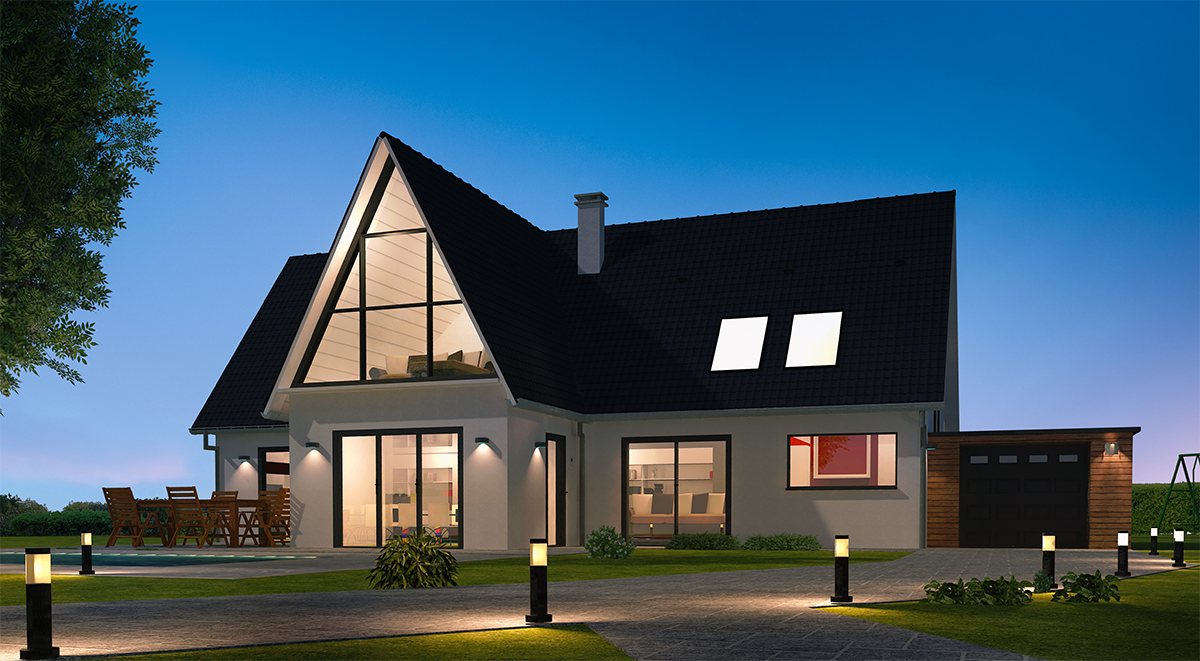
A natural extension of technological transition
Outdoor lighting has been undergoing a radical transformation fueled by groundbreaking advancements in LED lighting. Smart outdoor lighting is a natural extension of the technological transition from incandescent and fluorescent to LED. which pushed the boundaries of both performance and controllability of outdoor lighting systems.
LEDs are electroluminescent devices that produce light through recombination of electrons and holes in the quantum well (QW) between the p–n junction. These semiconductor emitters can produce high lumen output with significantly reduced power consumption over a lifespan that is more than 50 times longer than a typical incandescent lamp. An LED chip can be tuned through bandgap manipulation of quantum wells to achieve any monochromatic color. By varying the phosphor compositions an LED package can be engineered to achieve any correlated color temperature (CCT) and a balance between energy efficiency and the color rendering ability.
LEDs are inherently dimmable and hold up against constant on/off switching. This ability makes it possible to provide illumination that is highly controllable in light intensity as well as the color of light emitted by an additive color mixing system. The exceptional controllability allows LEDs to be readily paired with electronic circuits that provide computing, networking and sensing abilities, thereby enabling adaptive, intelligent and connected lighting.
A world of multi-faceted lighting possibilities
Smart outdoor lighting opens up a new world of multi-faceted possibilities, allowing flexibility to be built into how lights are controlled and how spaces are illuminated. At the most basic level, the outdoor lights can leverage data collected from motion and daylight sensors and make adjustments based on the environmental conditions. Building intelligence and connectivity into the LED systems not only unlocks the energy savings potential of lighting controls, but also allows for communication to exist between luminaires, between the luminaires and other local smart devices, and between the luminaires and the Internet of Things (IoT).
With two-way data communications and lighting management software running in the light controller and the cloud, smart outdoor lights can be controlled from IP-enabled mobile devices or programmed to respond to data from other smart devices and online services. While enhanced processing capacity finds its way into the outdoor lighting systems, migrating lighting control to the IoT infrastructure enables them to leverage the power of the cloud. In the context of these capabilities, smart outdoor lighting is afforded the ability to provide immersive, interactive experiences, in particular when the spectral tunability of multi-channel LED systems is employed.
All subsystems must work in unison to deliver the intended value
Smart outdoor lights take various forms and serve various purposes, but the essentials that contribute to a luminaire’s capacity to deliver value remain the same. A smart outdoor LED light integrates multiple components to deliver effective, efficient, dependable, and highly controllable illumination. The light-producing component is usually an assembly of SMD LEDs mounted on a metal core printed circuit board (MCPCB) or uses integrated LED arrays that mount directly to a heat sink without separate circuit boards. While LED technology supports genuine design freedom and offers the opportunity to advance beyond legacy form factors, a thermal transfer path must be established between the LED junction and the surrounding air to ensure that the LEDs will not fail prematurely under thermal stresses.
Smart outdoor lights can be divided into single-channel systems and multi-channel systems. In single-channel systems, all LEDs are mounted on the same circuit and they respond to switching and dimming control signals in the same fashion. Multi-channel systems include discrete circuits of LEDs that are individually addressed and controlled. Single-channel LED systems are static white or solid color luminaires. Multi-channel LED systems can be tunable white lights that use LEDs in different CCTs or full-color tuning lights that incorporate at least three LED primaries (red, green and blue). Tunable white lights provide an adjustable range of color temperatures. Full-color tunning lights such as RGB, RGBA, RGBW or RGBWA LED systems are used to create a full spectrum of dynamic colors for programming colorful sequences or to fine tune a particular static color.
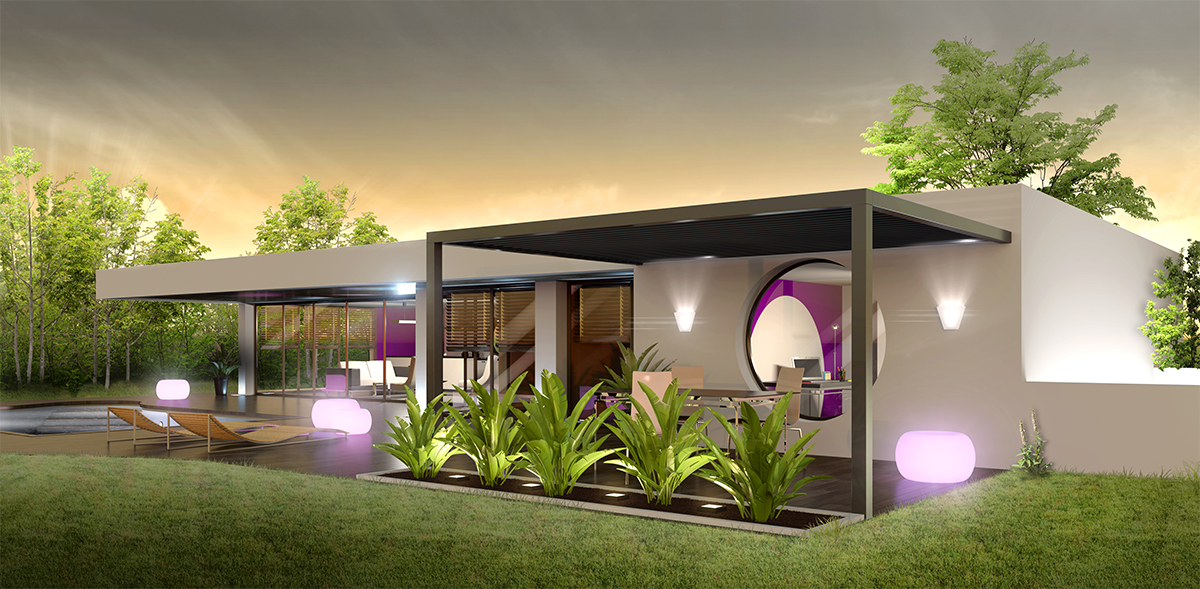
LED driver
The role of the LED driver is critical to the implementation of smart lighting concepts as the luminous behavior of LEDs depends exclusively on drive current regulation. LEDs are driven with a constant current, which is not readily available from a line voltage or a low voltage source. The driver circuitry for an LED luminaire should be configured to convert the AC voltage or DC battery power into a constant load current. Any fluctuation of the drive current can lead to visible effects such as flickering and may reduce the lifespan of LEDs due to the increased electrical stresses.
Most lighting effects and changes that a smart outdoor light should produce in response to the control input necessitate dimming of the LEDs, which needs to be accomplished by the LED driver. An LED driver may be designed to provide analog or digital dimming of the connected LEDs. Analog dimming operates by varying the amplitude of the output current. This technique is known as constant current reduction (CCR). CCR applies only to constant current LED drivers. Digital dimming is accomplished through pulse-width modulation (PWM) and supports both constant current and constant voltage applications. Analog dimming is commonly used in executing tasks that involve only intensity adjustment, such as those intended for achieving energy savings. PWM dimming allows for smooth, accurate and color-stable intensity control over a full range from 100% to 0%. In constant current systems, it is often used in color mixing applications that require accurate dimming control of each LED channel.
Light controller
The LED driver is operated by a light controller which leverages its computing, data acquisition, and networking competence to make “smarts” reside in the luminaire. A controller integrates the microprocessor, computer memory, network interface and input/outputs to communicate and interact with control devices and other smart nodes in the network, aggregate sensor information, handle all the number crunching and decision-making, and originate commands to the LED driver. The logic of making control decisions can be based on the programmed algorithms embedded in the controller, acquired from a cloud platform, or automatically learnt from the environment through motion detection and daylight harvesting.
The communication capability of the light controller is provided by a transceiver which typically implement wireless protocols to enable data exchange. The choice of protocol is driven by considering several factors such as the size of installation, interoperability, scalability and security. Wireless communication protocols of common use include Wi-Fi, ZigBee and Bluetooth. ZigBee offers incomparable scalability and interoperability between heterogeneous devices in one network. On the other hand, Bluetooth Mesh, which is also low power, self-organizing and self-healing, is gaining market momentum for connecting smart devices. Wi-Fi has the exclusive privilege of ubiquitous presence and direct connectivity with smartphones and tablets, although it is fundamentally deficient in scalability and interoperability.
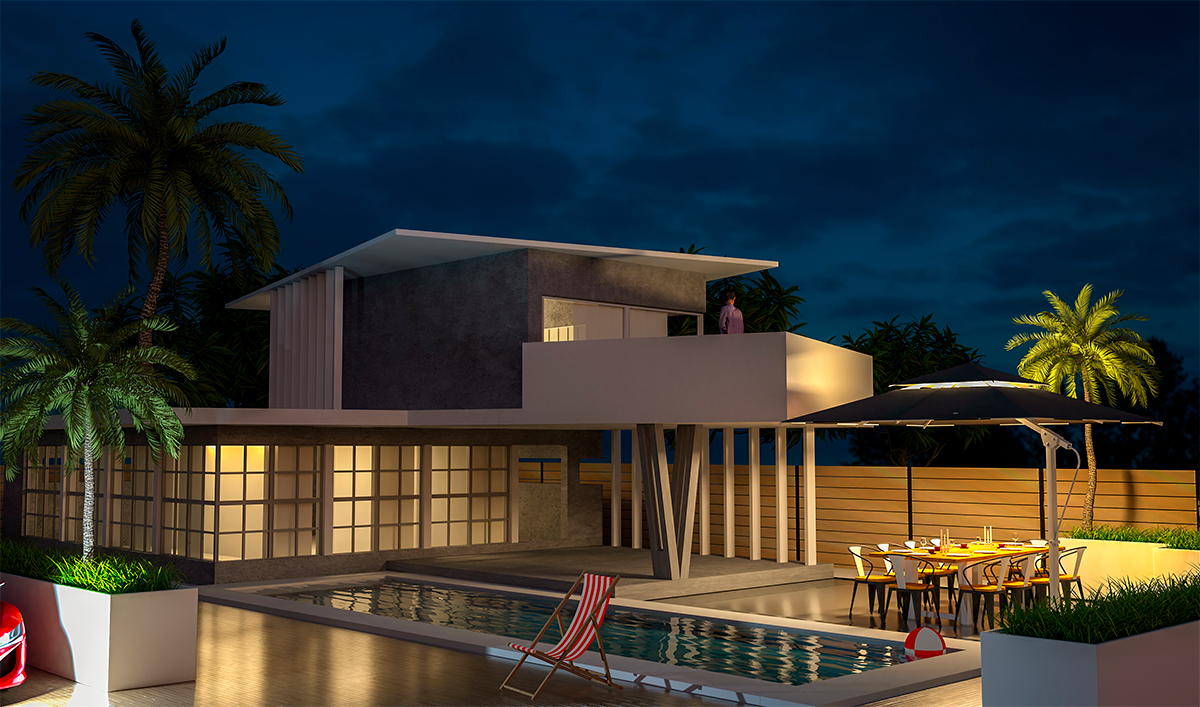
App control
Smart lighting puts the power to control, automate, and optimize lighting in the palm of your hand. Mobile applications run on iOS or Android devices enable people to configure scenes, program instructions, operate triggers, activate geofencing, and manage groups from anywhere in the world. The ability to enhance security and influence the atmosphere with smart outdoor lighting is probably the first thing people are drawn to. A smart outdoor light can stand in its own right to provide deterrence against intruders by creating a sudden burst of light upon the detection of movement in pre-defined areas. Vacation mode which is intended to mimic your presence can easily be programmed with a smartphone app. Dynamic lighting scenes and intricate color patterns can be programmed intuitively on the mobile app to improve the attractiveness, atmosphere and ambience of outdoor the environment.
Smart outdoor lights aren’t just controllable with smartphone or tablet apps. Voice assistants such as Amazon Echo and Google Home can be used to relay your commands. Integrating smart luminaires with third-party applications such as IFTTT can multiply smart lighting features and create cool automation recipes.

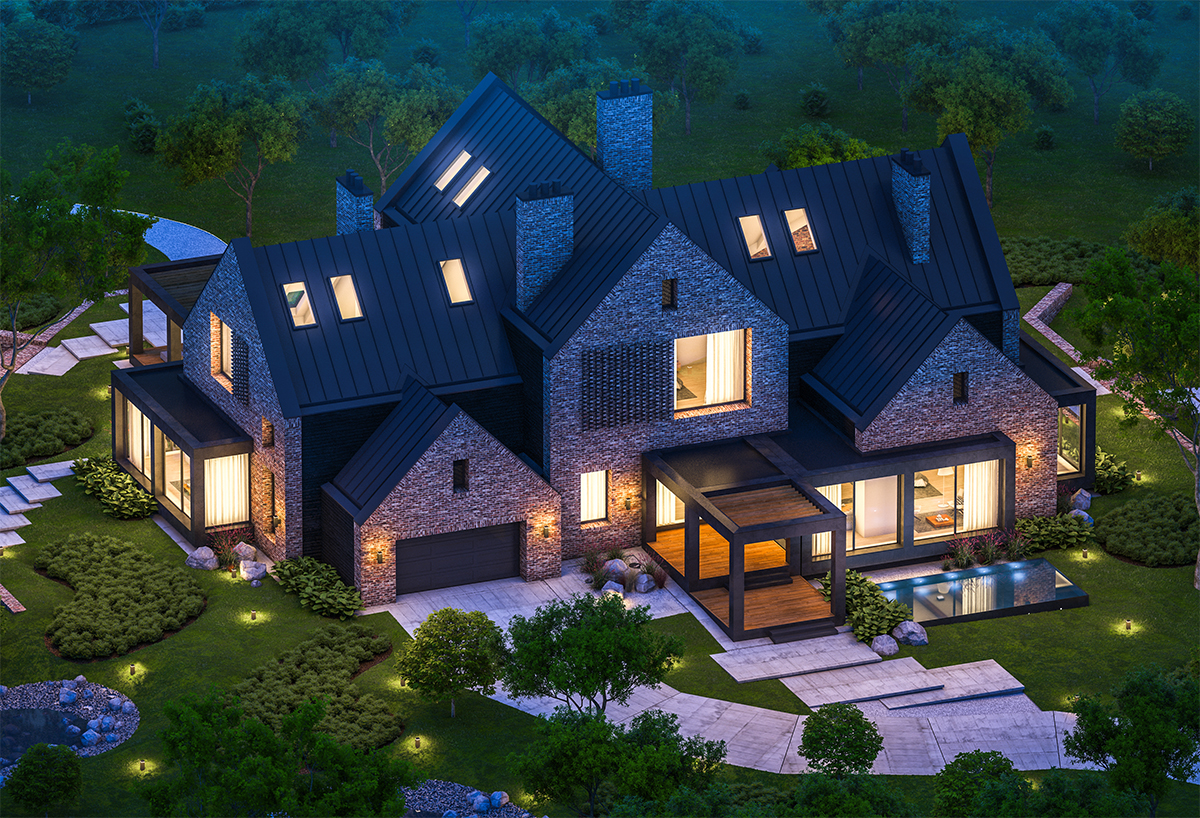



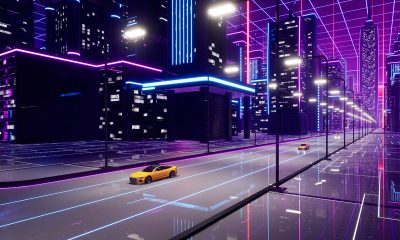
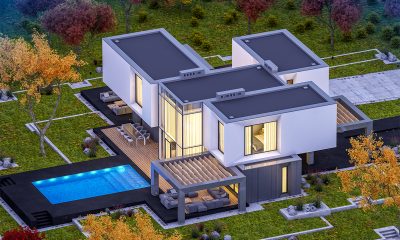

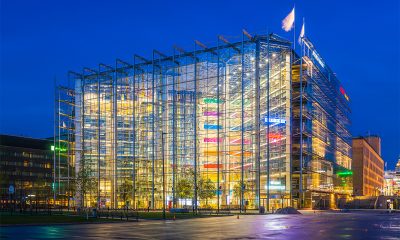

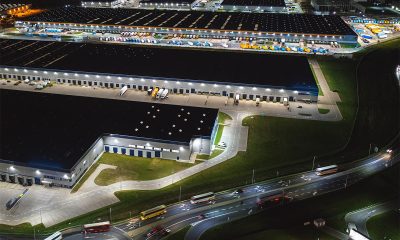

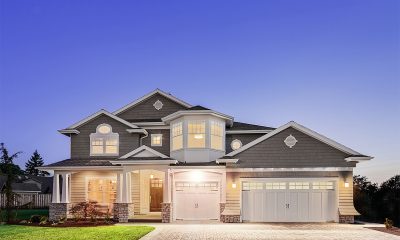






Loading...